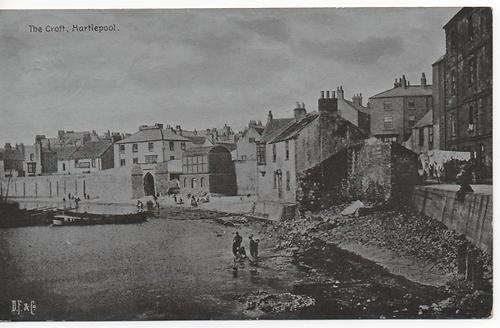 Hartlepool Sports & Leisure
Hartlepool Sports & Leisure
- Cinemas, Theatres & Dance Halls
- Musicians & Bands
- At the Seaside
- Parks & Gardens
- Caravans & Camping
- Sport
 Hartlepool Transport
Hartlepool Transport
- Airfields & Aircraft
- Railways
- Buses & Commercial Vehicles
- Cars & Motorbikes
- The Ferry
- Horse drawn vehicles
 A Potted History Of Hartlepool
A Potted History Of Hartlepool
- Unidentified images
- Sources of information
- Archaeology & Ancient History
- Local Government
- Printed Notices & Papers
- Aerial Photographs
- Events, Visitors & VIPs
 Hartlepool Trade & Industry
Hartlepool Trade & Industry
- Trade Fairs
- Local businesses
- Iron & Steel
- Shops & Shopping
- Fishing industry
- Farming & Rural Landscape
- Pubs, Clubs & Hotels
 Hartlepool Health & Education
Hartlepool Health & Education
- Schools & Colleges
- Hospitals & Workhouses
- Public Health & Utilities
- Ambulance Service
- Police Services
- Fire Services
 Hartlepool People
Hartlepool People
 Hartlepool Places
Hartlepool Places
 Hartlepool at War
Hartlepool at War
 Hartlepool Ships & Shipping
Hartlepool Ships & Shipping

The Croft
What we know about this image :
The Croft, Hartlepool. Situated on Hartlepool Headland next to the Fish Sands.
Donor : Mike Oxley
Location
Related items :
 Grainger, William
Grainger, William
(Compiled by Maureen Anderson)
William Grainger was born at Hartlepool in 1864. He married Bridget ‘Biddy’ (nee Fox) & they had two sons, William and James, and three daughters, Eve, Margaret and Ethel. In the true Hartlepool seafaring tradition of the time William served in sailing ships & early iron steamers, fished for herring in the Hartlepool keel boats and, in later life was a foy boatman.
He was a member of the Middleton Volunteer Life-Saving Company and the Hartlepool Rocket Life-Saving Brigade during which time he received a bronze gallantry medal from the Board of Trade. It was presented to him by the Mayor of Hartlepool, Councillor M Harrison, at the Royal Naval Reserve Battery in the first week of December 1901 for his part in the rescue of part of the crew of the Trio on 13 November 1901. During a severe gale & turbulent seas the Swedish barque had struck the south pier and, within sight of hundreds of people, began to break up. All the crew ended up in the water and some washed towards the shore. A few of the men watching the tragedy had ropes to try to pull the drowning crew to land and one, Alfred Gales, donned a lifebelt and brought two men to land. One survived but the other was dead when carried ashore.
William, at huge risk to his own life, swam through the boiling surf and floating wreckage and managed to rescue a man. He then re-entered the water to try to save another but the wreckage came between them and the man later washed up dead. An alarm was given that another man had been seen in the water and William made a third attempt to save a life but this proved to be a false sighting. Only three from the crew of ten survived. For this act of bravery the people of West Hartlepool presented William with a gold medallion.
William was also a member of the Hartlepool Rocket Life-Saving Brigade for which he received a Board of Trade silver medal after 35 years’ service. The medal was presented on 17 October 1930 at the Hartlepool Rocket House by Captain R Bacchus, Inspector of Coastguards at Tynemouth. At this time William was aged 68 and living at 22 Wood Street. Remembered as a ringer of the fog bell on Hartlepool Breakwater he also acted as watchman for the Port and Harbour Commission at the Old Pier.
On his death The Northern Daily Mail of Friday, September 6th 1946 described William as one of the last of the original Crofters which referred to an old part of Hartlepool known as the Croft which has now gone.
More detail » The Croft
The Croft
The Croft, Old Hartlepool which is situated on the Town Wall near to the Fish Sands.
More detail » old Hartlepool
old Hartlepool
Old Hartlepool is the original fishing village which existed before West Hartlepool. The origins of ancient town of Hartlepool (Old Hartlepool) can be traced back to ca 647 AD. In the 8th century AD, Bede mentions it (“heopru” – the place where harts (deer) drink). The record goes blank then, and does not reappear until the 12th century. In 1201 King John confirmed a charter owned by Robert Bruce V. The name “Brus” or “Bruce” is still associated with parts of the town.
The fine abbey church of St. Hilda is mainly Early English, dating from 1185, on the site of an abbey which flourished as early as 658 AD. St. Hilda’s still flourishes and stands in a prominent place on the Hartlepool headland, and nearby the ancient town walls (completed ca 1322 as a defence against the twin enemies of the Scots and the sea) can still be seen.
On 8th February 1201, the town was granted its first royal charter by King John. A second royal charter was granted in 1593 by Queen Elizabeth (the First).
Hartlepool was visited several times by John Wesley on his preaching tours … he was certainly in the town in 1757 and 1786.
Old Hartlepool continued its independent existence until 1967, when local government reorganisation created the merger with its young neighbour, West Hartlepool.
More detail »





